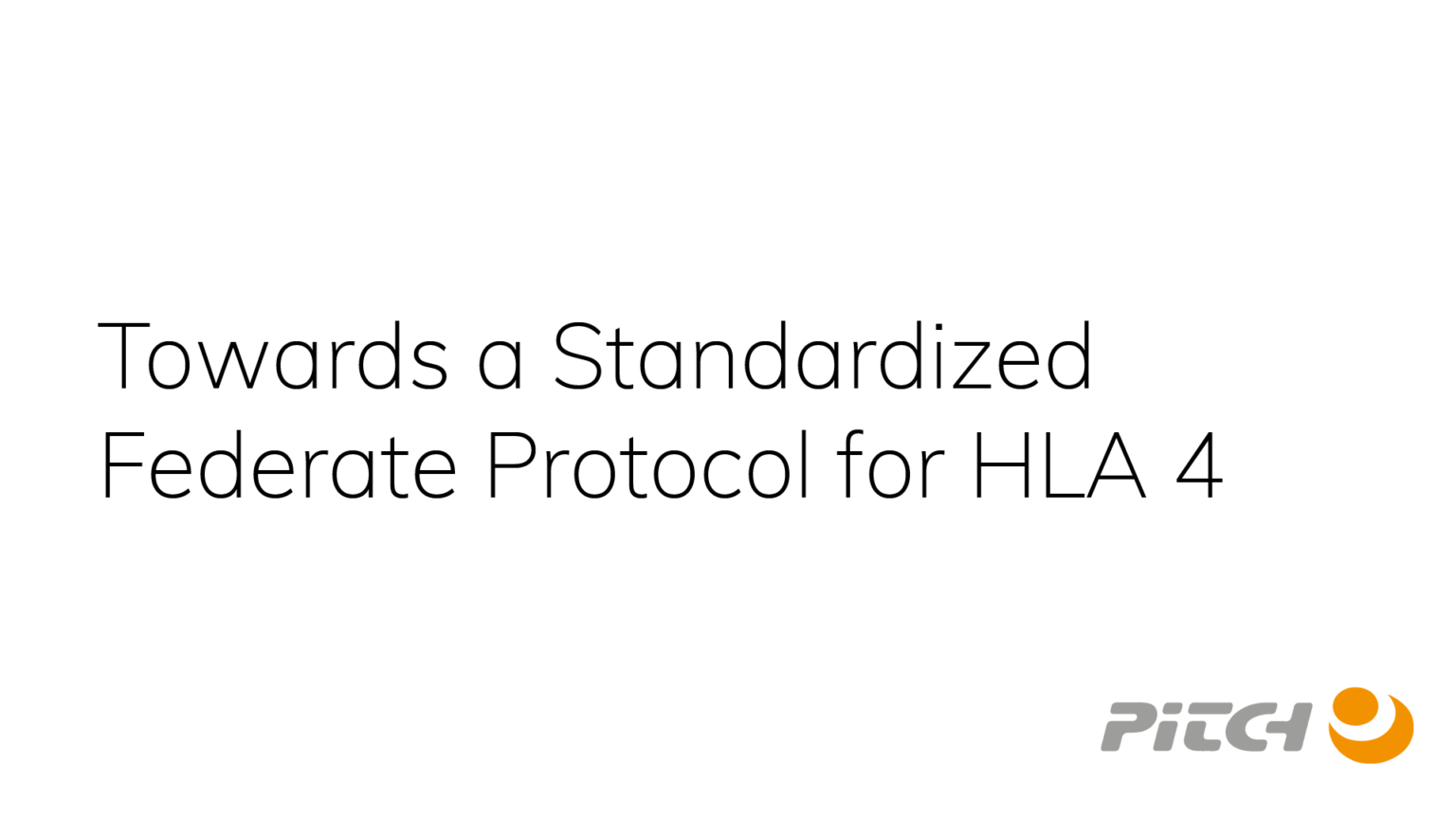ABSTRACT: HLA is a powerful interoperability standard with a rich set of services for information exchange, synchronization and management of federations. These services are accessed through a local RTI library, installed on the same computer as the simulation itself. As new and improved RTI versions are released, or if the user wants to switch RTI supplier, these libraries need to be replaced. What if there were instead a simple protocol that a simulation could use to access the HLA services?
This paper proposes such a protocol for HLA 4. It partly builds on experiences from the Web Services API in HLA Evolved. The WS API proves the concept, but has several shortcomings dues to its use of blocking calls and use of XML. An optimized, streaming, binary protocol is instead suggested. Such a protocol would make it easy to add a small and
generic library to any federate. Switching RTI libraries would then be a simple operation of connecting to a different network address.
Additional advantages are that it makes it easy to provide native HLA support for any language, like C# or Python, to execute in CPU-constrained or hard real-time environments, to communicate in mobile environments, like 3G or 4G, or even to embed HLA support in hardware equipment. It can also be used to avoid re-accreditation of simulations, since the accredited simulator need not be updated. Some design considerations include discovery, session management and latency handling. Early test implementations have shown performance close to current RTI performance and improved fault tolerance over WAN links. To be able to easily swap between different RTI implementations, a standardized protocol is now being proposed to the HLA 4 Product Development Group.
Authors: Björn Möller, Mikael Karlsson, Fredrik Antelius
Publication: Proceedings of 2018 Winter Simulation Interoperability Workshop, 18W-SIW-037, Simulation Interoperability Standards Organization, January 2018

